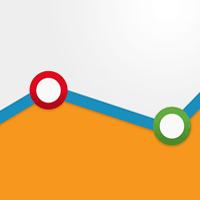How Does Cohort Analysis Work?

Cohort analysis is a way to understand how subscriptions evolve over a customer/client lifetime. For content marketers, at least those offering subscription- based products or services, cohort analysis reveals what is happening in the subscription lifecycle, enabling publishers to take action and avoid lost revenue by adjusting discounts, incentives or upgrades, or perhaps even by initiating an outreach program to minimize churn.
Don't be frightened by the term "cohort." It's just another name for "group." Instead of looking at aggregate numbers like or monthly recurring revenue however, a cohort analysis visualizes the way these metrics evolve over the lifetime of a group (cohort) of customers who converted in the same time period (usually a specific month).
Cohort analysis essentially reveals the point that customer churn is at its highest and when it stabilizes - powerful insights of which brands can take full advantage.
Many enterprises focus solely on monthly recurring revenue (MRR), an important metric for subscription- based businesses but it should not be the only one. For example, under a monthly subscription model the MRR is the price paid each month (or if paid up front for a year, the revenue would be amortized over 12 months). The problem with only tracking MRR as a success metric is that it does not reveal the point of break down (when subscriptions aren't renewed). Knowing MRR is useful, particularly when calculating MRR churn, but cohort analysis makes it easy to visualize.
To make cohort analysis a useful practice, proper segmentation is critical. Clearly defined groups (e.g. geography, source) should be established early to acquire as much data in as short a time frame as possible. What this practice ultimately provides is an opportunity to see just how well a company is performing over time at keeping its users.
Those who don't think they are cut out to use cohort analysis in their enterprise analytics might be right if they don't provide a software-as-a-service (SaaS) based monthly subscription or are not a traditional publisher. Fortunately, however, there are myriad ways to use cohort analysis outside of just understanding MRR, churn and lifetime value of customers. With some creative filtering and visualization, cohort analysis can be performed on any event or series of events.
Web analytics solutions including RJ Metrics, MixPanel and KISSmetrics offer simple but powerful tools to engage in the practice of cohort analysis already. Google even recently introduced a (somewhat limited) "beta" cohort analysis feature within its own Analytics product. Some new and very interesting solutions are emerging, however, that are capturing the attention of brands recognizing the value that can be provided with cohort analysis.
ChartMogul, for example, provides a solution to calculate key subscription metrics from Stripe, Braintree, Chargify or Recurly accounts (all of which provide subscription billing of some nature). ChartMogul users can see their data in real-time and receive in-app and email notifications, which could make it useful beyond just the traditional month-over-month analysis engaged in by SaaS companies or traditional publishers.
Take ecommerce retailers as an example. If they run short-term marketing efforts like single-day email campaigns, this report provides the chance to track the behavior of just the users they acquired during specific time frames. For example, if they're running successive 30%-off, 25%-off and 20%-off campaigns as a holiday approaches, they can see how different metrics like Revenue per User and Transactions per User compare among the groups of users they acquired on the dates each campaign ran.
Cohort analysis provides a great deal of insight that enterprises must pay close attention to. By taking the time to engage in the practice, marketers will learn how to reduce sign-up friction, increase loyalty and encourage repeat purchases.










